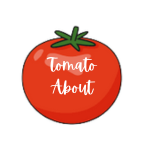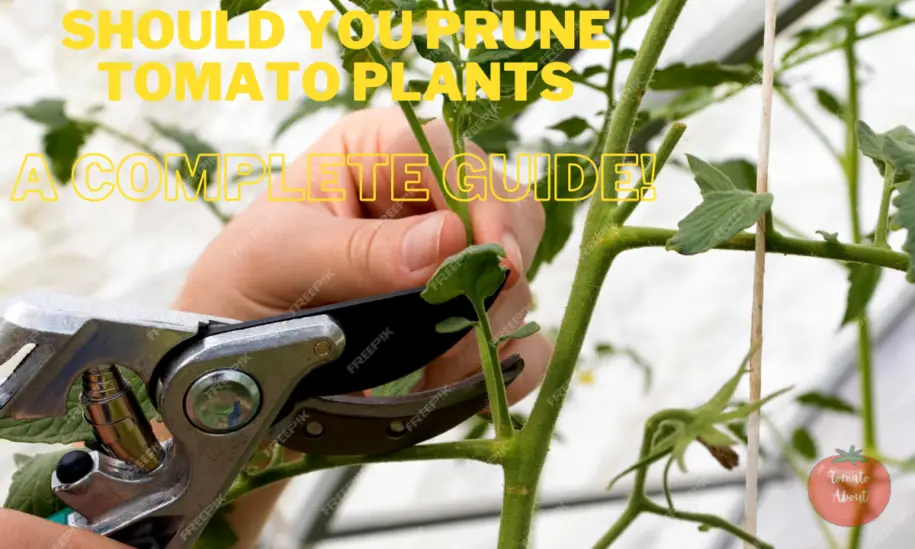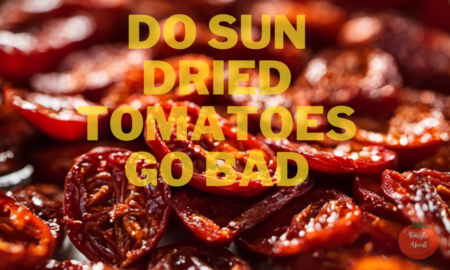Key Takeaways
- Pruning tomato plants can lead to healthier, more productive plants, but it requires know-how and extra effort.
- Determine your tomato type (indeterminate or determinate) to decide whether pruning is necessary.
- Pruning benefits include improved air circulation, increased sunlight penetration, energy redirection to fruits, space-saving, and easier harvesting.
- Potential drawbacks of pruning include the need for more maintenance, possible yield reduction if overdone, and the risk of spreading diseases.
- Pruning techniques include removing suckers, clearing low branches, thinning excess foliage, and topping indeterminate varieties when fruits start ripening.
For many gardeners, growing tomatoes is a rite of passage. The taste of a fresh, homegrown tomato is simply unbeatable. As you prepare to grow these delicious fruits, a common question arises: should you prune tomato plants?
Proper pruning can lead to healthier, more productive plants. However, it also requires know-how and additional work on your part. In this article, we’ll explore the pros and cons of pruning tomatoes so you can decide what’s best for your garden.
Determinate vs. Indeterminate Tomatoes
Before deciding to prune, it helps to know what type of tomato plants you are growing. There are two main types:
Indeterminate Tomatoes
Indeterminate tomato varieties grow continuously all season long. They can reach lengths of 10 feet or more if supported by a trellis or cage.
These plants produce new foliage, flowers, and fruits steadily over the course of the growing season. As such, indeterminate types usually require heavy pruning to keep them manageable.
Determinate Tomatoes
Determinate tomatoes stop growing once they reach a genetically predetermined height, which is typically compact at 3-5 feet tall.
These bushy plants set all their fruits at once, leading to a single large harvest period rather than a continuous yield. Determinate varieties need minimal pruning if any at all.
Knowing your tomato type will give you a good idea of whether pruning will be beneficial or not. Next, let’s look at the potential benefits and drawbacks.
The Benefits Of Pruning Tomato Plants
Here are some of the main advantages of pruning indeterminate tomato plants:
1. Improves Air Circulation
Pruning creates space between branches, allowing air to flow freely. This is important for reducing fungal diseases like early blight, Septoria leaf spot, and other common tomato ailments.
Without pruning, plants become overcrowded with foliage. This causes humidity levels to rise, creating the perfect damp environment for disease organisms to thrive.
2. Increases Sunlight Penetration
Similarly, pruning opens up the plant’s canopy. This allows more sunlight to reach lower leaves and fruits.
With improved light exposure, tomatoes can produce more energy through photosynthesis. More energy means sweeter, more abundant harvests for you to enjoy!
3. Redirects Energy To Fruits
Tomato plants have limited energy resources. By removing excess foliage and shoots, the plant can focus on ripening existing fruits rather than growing more vegetation.
Pruning helps channel nutrients directly to the fruits, rather than dividing energy between unnecessary leaves and branches. The result? Larger, better-tasting tomatoes for you to harvest.
4. Saves Space
Left unpruned, indeterminate tomatoes become unruly sprawls of vegetation. Not only does this waste the plant’s energy, but it also takes up precious garden space.
Pruning keeps plants tidy and compact – a smart technique when growing in raised beds, containers, or small spaces. You can train the vines vertically or even horizontally along a trellis.
5. Makes Harvesting Easier
Nothing’s worse than hunting through a dense jungle of foliage to locate ripe tomatoes. Pruning gets rid of this problem by keeping plants manageable.
You’ll appreciate the easier access when it’s time to gently pluck those red beauties for eating!
Potential Drawbacks of Pruning Tomatoes
Pruning isn’t without its downsides. Here are a few possible cons to consider:
- Requires more frequent maintenance and care
- Can slow total yield if overdone
- Risks spreading disease between plants if shears aren’t sanitized
- Removes protective foliage cover, exposing fruits to sun-scald
- Stresses plants, especially during hot weather
For these reasons, some gardeners choose not to prune, or take a minimalist approach. Others opt for a hybrid method, pruning plants lightly in their youth, and then letting them grow wild later in summer.
There’s no universal right or wrong way. You’ll need to experiment to find the best pruning regimen for your specific garden.
When To Prune Tomato Plants
Tomato pruning can be done throughout the growing season as an ongoing process. Generally, it’s recommended to:
- Conduct the first pruning when seedlings are 12-18 inches tall. This early trim promotes bushy, compact growth.
- Prune every 1-2 weeks thereafter to manage excess foliage and shoots. Time it before another growth spurt begins.
- Trim lightly after the first fruit set to avoid stressing plants.
- Stop pruning 1-2 months before the expected first frost to allow late ripeners time to mature.
Of course, pruning schedules vary. Pay close attention to your plant’s growth habits and adjust as needed.
When It’s Too Late to Prune
As a rule of thumb, avoid heavy pruning after the first fruits begin to ripen. At this point, the plant is putting energy into the existing tomatoes. Heavy pruning can disrupt fruit production.
For indeterminate varieties, you can still do light pruning in late summer to remove diseased leaves and excess foliage. But refrain from topping plants or removing large branches that could shock the plant.
Should You Prune Determinate Tomatoes?
Determinate tomatoes stop growing at a certain height, unlike indeterminates. As such, pruning determinate varieties isn’t really necessary.
You can still pinch suckers and clear overcrowded areas. But avoid topping determinate plants—their natural bush shape works well for cage support.
Of course, feel free to lightly prune if it helps manage unruly vines. Just know it likely won’t increase yields.
Pruning Supplies Needed
Tomato pruning doesn’t require much equipment. Here are a few must-have supplies:
- Bypass hand pruners – Sterilize the blades before each use with isopropyl alcohol to prevent the spreading of disease.
- Tomato cages or trellis – Support structures keep pruned plants tidy and off the ground.
- 5-gallon bucket – Have one on hand to hold cuttings as you work. This keeps debris off the soil.
- Gardening gloves – Protect your hands from scratches when pruning dense foliage.
- Disinfectant spray – Spritz tools occasionally while pruning to keep microbes at bay.
That’s all you need! Avoid wound dressings, as research shows they provide no benefits and may even hinder healing.
How To Prune Tomato Plants Like A Pro
When it’s time to break out the pruners, use the following techniques:
Remove Suckers
Suckers are shoots that form in leaf axils where stems and branches meet. Left alone, they sap energy and soon turn into messy, unproductive growth.
Carefully prune suckers by snipping them just above the junction. Be sure to identify true suckers rather than productive stems. Leaving 1-3 main stems and removing excess growth is a good rule of thumb.
Eliminate Low Branches
Prune off any branches or leaves near the soil surface. This “bottom pruning” increases airflow near the roots while preventing fungal issues.
Try to remove foliage up to 18 inches from the ground. Just be sure not to overdo it and expose the trunks.
Clear Excess Foliage
Plants become bushy quickly, with inner branches often shaded and ineffective. Thin overly dense areas to let light penetrate.
Focus on removing vegetation that appears weak, damaged or diseased. Healthy leaves power photosynthesis, so be selective.
Remove Flowers/Fruits (At First)
When plants are young, pinch off any forming buds or fruits. This encourages sturdy vegetative growth early on.
Let plants grow 8-12 leaves before allowing the first fruit clusters to develop. The delayed harvest is worth stronger, higher-yielding plants.
Top Indeterminate Varieties
“Topping” or pinching the main growing tip redirects energy to existing fruit clusters. Do this to indeterminate types only when fruits start ripening.
Determinate (bush) varieties should never be topped – it can stunt plants and reduce yields.
Exceptions to the Rule
While pruning is beneficial for most indeterminate tomatoes, there are a few exceptions:
Cherry Tomato Varieties
Small-fruited cherry tomatoes produce well even on the side shoots. The additional suckers and branches mean more places for the little tomatoes to grow.
Prune cherry tomato suckers conservatively – or skip pruning altogether if space allows. Just monitor for disease and excessive crowding.
Container-Grown Tomatoes
Compact containers don’t leave much room for aggressive pruning. Plus, the confined roots appreciate the humidity created by foliage.
Go easy on pruning container tomatoes. Focus on clearing space around existing fruit clusters and removing lower leaves.
Growing Tomatoes Vertically
When trellising or staking tomatoes in upright rows, pruning is needed to keep plants narrow and prevent crowding.
Prune vertically grown tomatoes aggressively, leaving just 1-2 main leaders. Constant trimming encourages straight, tall growth.
What Happens if You Don’t Prune Tomatoes?
If allowed to grow wild, tomato plants become very bushy and dense with vegetation. While you may get an abundant yield, there are some drawbacks to avoiding pruning completely:
- Plants are more susceptible to disease due to lack of airflow
- Fruits hidden by foliage are prone to rot and sunscald
- Difficult to spot and access ripe tomatoes
- Garden space wasted by sprawling vines
- More work is required to stake and support overgrown plants
- Lower yields of larger fruits since energy is divided
That being said, you can certainly skip pruning, especially with determinate varieties. Just be diligent about disease prevention and support the bushy plants with cages or stakes. While labor-saving, expect a trade-off in fruit quality and plant health.
Tomato Pruning: Final Tips
Here are a few final tomato pruning pointers as you begin:
- Don’t expect perfection. Some foliage removal is better than none, even if you don’t prune “textbook” style.
- Approach pruning gently at first. You can always remove more, but you can’t add it back!
- Use sterilized, sharp pruners. Blunt tools crush stems and can spread disease. Make clean cuts.
- Prune on a dry, sunny day around noon. Avoid damp conditions prone to infection.
- Compost or burn clippings. Don’t add diseased trimmings to the compost pile.
- Wash hands immediately after pruning, before touching other plants. Sanitize tools too.
- Apply mulch after heavy pruning to protect soil moisture and discourage weeds.
- Avoid pruning right after transplanting, during cold snaps, or during fruiting. Pick less stressful windows.
- If suckers keep regrowing aggressively, it may indicate overly-rich soil. Avoid over-fertilizing.
Still, if you have concerns about managing vigorous indeterminate varieties? You can then consider planting container-friendly, compact determinate tomatoes that need minimal pruning. Or, you can choose disease-resistant tomato varieties that can better tolerate dense foliage.
The choice is yours! pruning is an extremely useful tool for growing healthy, abundant crops. Just be sure to follow the plant’s lead – and don’t be afraid to prune lightly or skip seasons if plants respond poorly.
Frequently Asked Questions
What are the signs that your tomato plants need pruning?
Some signs your tomato plants may need pruning include overcrowded interior branches, leaves growing in the shade of other leaves, suckers emerging at leaf joints, foliage or fruits touching the ground, and areas with poor air circulation. Target pruning efforts to these overly dense areas.
Is it absolutely necessary to prune tomato plants?
It’s not mandatory, but pruning indeterminate types can improve plant health and yields. Determinate varieties need little pruning. You can skip pruning, just monitor for issues caused by dense growth.
Can you prune tomato plants too much?
No at all, excessive pruning can stress plants. Remove only what is necessary to open up the plant canopy and improve air flow. Never prune more than 1/3 of foliage at once. Aggressive pruning makes plants work extra hard to replace removed growth, which can diminish yields.



